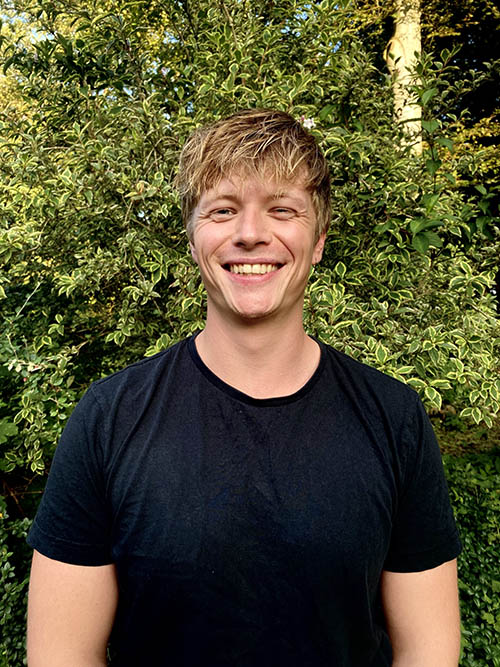Portraits from Wind Summer School 2023
Each summer Vestas and Siemens organize a two week long Wind power course in collaboration with Aarhus University. Mechanical and Power Engineers from all over the world come to Denmark to learn more about the latest technology and the ever-growing need for innovation. They collaborate, calculate and in the end, compete in designing the most innovative wind turbine.
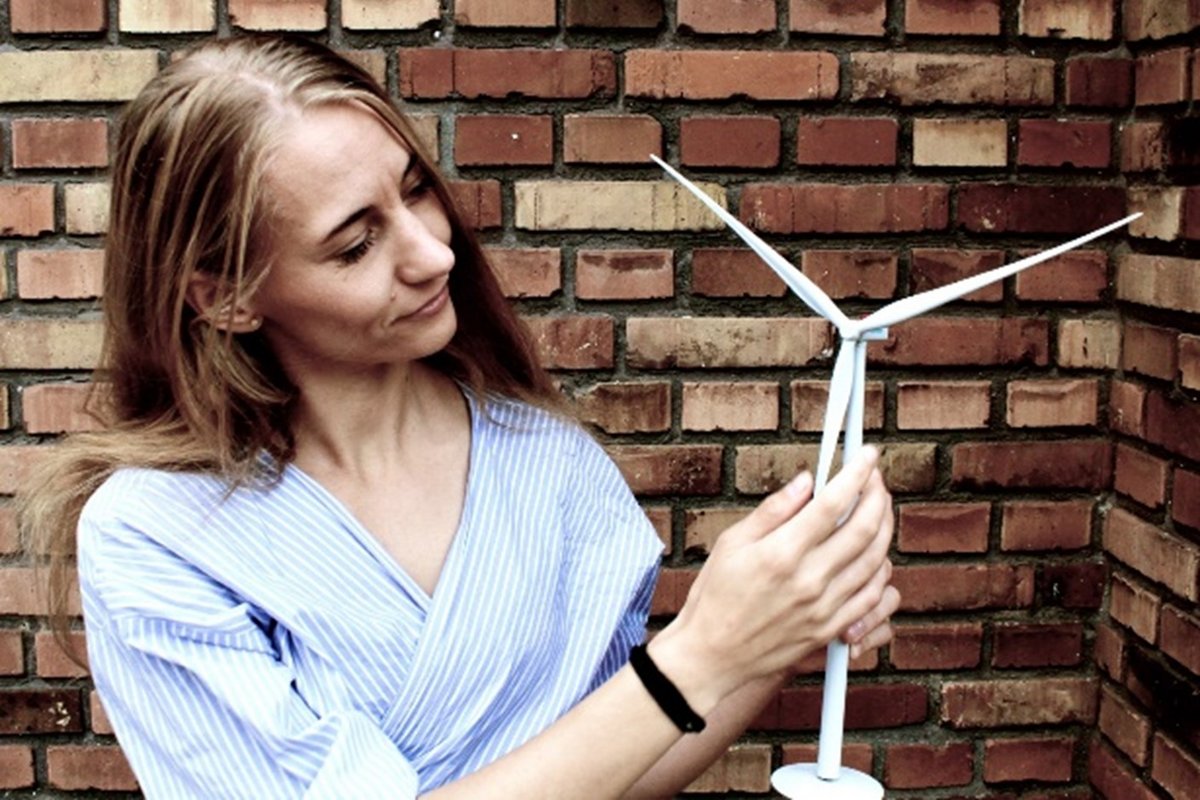
Last summer I attended Vestas and Siemens Wind Power Summer School in Videbæk, Denmark. In this course I learned many interesting things about wind turbines, business cases and how to think like an engineer. And I got to meet the kindest and most open-minded people.
I have interviewed 4 of my fellow students and one of my teachers, hoping that their life story, their ambitions, and their dreams will inspire others to pursue a career in engineering and help highlight the important and urgent challenges of today. You will meet Janne from Germany with her contagious smile and ambitious climate goals, Nanna with the pink blazer and great leadership skills, Sebastian who dances salsa and dreams of becoming a teacher, Thomas a professional opera singer who is keen on machines and Bjørn a skilled teacher at Aarhus University and one of the driving forces behind it all.
My name is Simone and I’m studying electrical Energy Engineering. It was either that or becoming a couple’s therapist or journalist. I am so grateful to have chosen this field, I find it meaningful, challenging and I can see how much me, and my colleagues are needed in the green energy transition. I love spending time in the very nature I am trying to protect - river rafting in the Norwegian rivers and kitesurfing in the cold beautiful Danish oceans. I like to write stories, paint in bright colors, and sing songs I can’t quite remember the lyrics to.
A Thank you to all the people who volunteered to be interviewed. You are the face of the future.
Simone, 27 years old
Participant Vestas and Siemens Wind Power Summer School
Studies Electrical Energy Engineering at Aarhus University, Denmark
"For Germans Scandinavia is where green energy transition has been taken one step further"
My first conversation with Janne was in German. Her face lit up when I greeted her in her native language. Our second conversation was about Møn – a beautiful, lush Danish Island perfect for climbing, kayaking and hiking. A few days later while eating a pink raspberry cake in the break we discussed politics and the need for more engineers in politics. And with a serious undertone we talked about, the shortage of energy engineers and the devastating impact it will have on the climate.
I ask Janne what she dreams of, and she answers quickly; ‘to help drive the green Energy transition. That or sailing around the world.’ Janne went to a small island in the North Sea to work as an electrician and fixing pumps and now she studies Energy and Environmental Engineering [Energie und Umwelttechnik] in Germany where they cover a wide range of topics including, hydrogen, Power to x, biogas, different renewable technologies and recycling.
As a Dane I am proud to hear that she would like to work in a Scandinavian country because; ‘for Germans Scandinavia is where the green energy transition has been taken one step further’. She came to Vestas and Siemens Wind power School to meet other young people who are passionate about the environment and technology, and despite Germans being known for their love of sauna it was here in Denmark she had her very first sauna experience.
Her role model is Claudia Kemfert a German Scientist in Energy Economics and when I ask her how she thinks we can inspire more people and in particular girls to become engineers she says ‘It already starts in school. When girls are taught, they are not good at math. We need to teach girls math can be fun.’
Janne, 21 years old
Participant Vestas and Siemens Wind Power Summer School
Studies Energy and Environmental Engineering in Germany
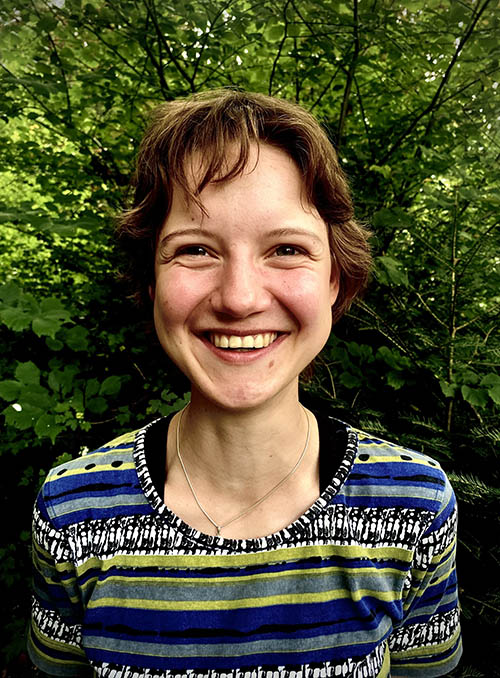
"I want to show what an engineer can look like. They can also look like me"
I met Nanna’s green leopard jacket before I met her, and I knew right away I would like her. We bonded over our shared love for extreme sport – her skydiving and me river rafting. We quickly ended up discussing feminism and sharing our experiences of what it feels like to be part of a minority in engineering. Her in mechanical- , me in electrical engineering. We both agreed the biggest mistake we made in this course so far was not buying enough snacks.
I ask her how she got her mesmerizing British accent and she laughed and said perhaps from her mother who is an English and music teacher. When I ask her about her favorite pizza, she proudly said ‘my pizza taste has developed a bit’. I inquired about if she had a rogue dream and she said, ‘I would like to be a lead singer in a band one day’.
She tells me about the time where she worked in CERN and confessed that pink was her absolute favorite color. She laughs when she tells me she accidentally signed up for mechanical engineering. ‘Actually I wanted to be a civil engineer.’
‘I was scared mechanical engineering wasn’t for me. I had a lot of concerns that I wouldn't fit in with all the boys.’ She continues now with a frown on her face; ‘People make a big deal out of the fact that I was studying mechanical engineering, since I am a woman.’ She continues in a raised animated voice; ‘I want to show girls that if I can do it, they can do it. I want to show what an engineer can look like. They can also look like me. People have this idea that, as an engineer, either you are a man, or you look like a man. Of course, as a woman, you can be talkative, smiling, pretty, nerdy and smart at the same time and good at what you do’
Nanna, 27 years old
Participant Vestas and Siemens Wind Power Summer School
Studies mechanical Engineering at Aarhus University
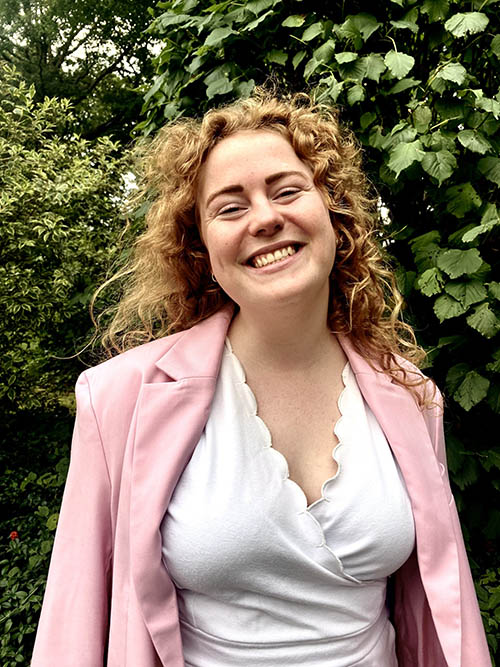
"Perhaps people think it [Electrical Energy Engineering] is just boring and hard work and they don’t know what a big difference they could make."
Bjørn is the kind of teacher you admire and like at the same time. His calm and humble manner almost makes you forget how knowledgeable and smart he is. He lives on an old farm with his wife, daughter and son. When he talks about his house, I imagine this is what all houses will look like in the future:solar panels on the roof, heat pumps and electric cars in the garage. He has a shared ownership of a hydrogen producing wind turbine and he enjoys DIY projects ‘it is quite satisfying’ he confesses.
I ask him what the biggest challenge the wind industry faces is, and he doesn’t hesitate; ‘having enough qualified engineers & technicians’’, he continues; ‘and politically is the problem that the politicians don’t see that it takes a long time from start to finish - for a wind park it is 7-10 years. So even if we decide to build a park today, we don’t have it tomorrow’.
I am curious about what made him become a teacher ‘I always wanted to be a teacher. And the lack of engineers and the urgency of the climate crisis made me think. I have to do something.’ We discuss why so few people study Electrical Energy Engineering and we are both puzzled. Young people care more than ever about the climate and want to make a difference. “Perhaps people think it is just boring and hard work.” He says, ’and they don’t know what a big difference they could make. We need more role models. The technology is already there. Wind, solar, batteries, and heat pumps. The challenge is to connect it all together’. I ask him if he thinks we will solve climate change; ‘We have to’ he says. There is silence between us before he continues; ‘But I am still an optimist. We saw with Covid 19 , how fast we can make things happen if we really want to.’
Bjørn, 56 years old
Teacher Vestas and Siemens Wind Power Summer School and Electrical Energy Engineering at Aarhus University
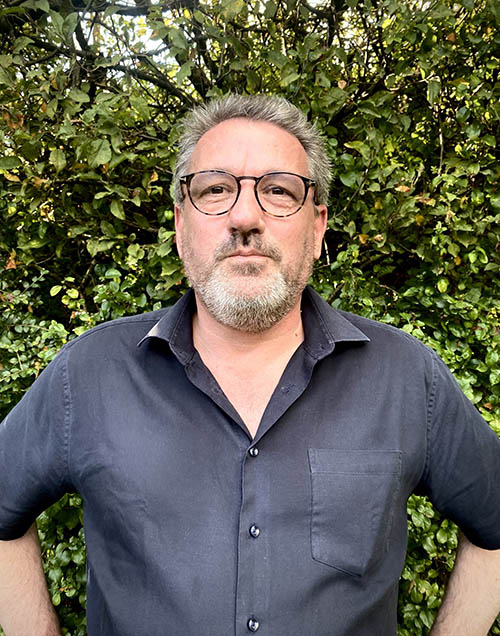
"It will be more and more normal to have more than one career. It is never too late to change your career."
One of my favorite things about going to new places is the interesting people I meet along the way. Thomas is one of those people. Looking at his thick beard you would think he might have been a lumberjack, so I was surprised and impressed to hear he had been a professional opera singer for 18 years. He met his wife on a tour bus, just like in the movies. His smile reached his eyes as he says, ‘It was meant to be.’
I ask him what he found the most interesting about the Summer School so far and he said “wind turbine control theory and the general workings of the gearbox, generator and aerodynamics of the wind.” He adds with a satisfied tone; ‘There is something right about machines. They just make sense.’ I wanted to interview Thomas because I love to see people who are brave enough to change their careers. In my class back at the university we have many different people: an organist, a philosopher, an electrician and bachelors in philosophical politics and Art History. They prove, what engineers in the ancient times have always known, that art and engineering doesn’t have to be two separate things. Engineers need to be creative, open-minded and curious.
He loves windsurfing and says he would love to live and work in France one day. ‘I always felt a bit French’ he confesses. We laugh about how he would sit on the porch, drink wine, sing Italian opera and work with turbines. Being a professional opera singer might sound like a Hollywood dream, and while he loved it, it did come with some uncertainties, and he adds with a dry sense of humor; ‘When I was sitting in a cramped dressing room, I always dreamt of having my own office space.’
Thomas, 46 years old
Participant Vestas and Siemens Wind Power Summer School
Studies Electrical Energy Engineering at Aarhus University.
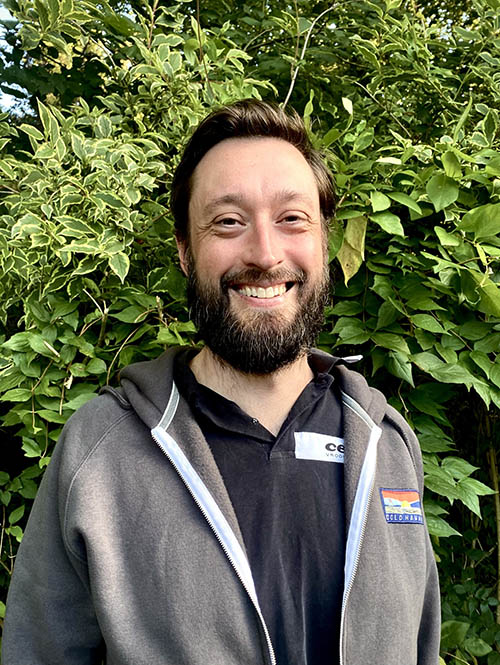
"He was a problem solver. He was a great man. If I can be half the man he was. I will be happy."
I have known Sebastian for 3 years, attending classes with him and dancing salsa together on Thursday evenings. He dreams of becoming a teacher one day and I hope he will. His patience, curiosity and enthusiasm will make him well suited for this position.
I ask what he likes most about the summer school and he says ‘The openness of people. I also really enjoy seeing how Vestas made 3D drawings of their turbines. So many components have to fit together that is very exciting. He plans on traveling through Europe or go to Argentina and take salsa classes. It sounds exciting and I urge him to take me with him. He would also love to work in Japan; ‘That is the great thing about being an engineer. You can work all over the world.’
I ask him about the most interesting new technology; ‘Storage is interesting. Batteries must be diversified because of the rare minerals. If we could use iron, it would be much better. Originally, I thought I wanted to work with cables. If we combine wind and solar and make an interconnected European system, the power fluctuations level out’. We discuss some of the technical challenges of transporting a lot of power over large distances using AC and the promise of high voltage DC lines across European soil or offshore; ‘It will be interesting to see what the future will hold. There is a lot of work for us to do.’
I ask him about his biggest role model. ‘My dad. He was always himself; he sang an old Danish song about being yourself. He always sang it annoyingly wrong’ I can see in his eyes how much he misses him, and I feel the loss in my chest too. When he looks at me again, he smiles;
‘He was a great man, if I can be half the man he was. I will be happy. He was a problem solver. The way he approached problems was with a smile and enthusiasm. I chose to be an engineer because I like to solve problems. It doesn’t matter what the problem is. It is the act of finding a solution based on the knowledge you can either acquire or remember that brings me joy.’
Sebastian, 24 years old
Participant Vestas and Siemens Wind Power Summer School
Studies Electrical Energy Engineering at Aarhus University.
